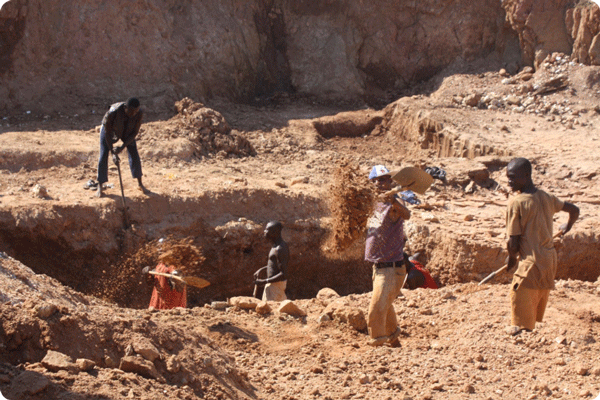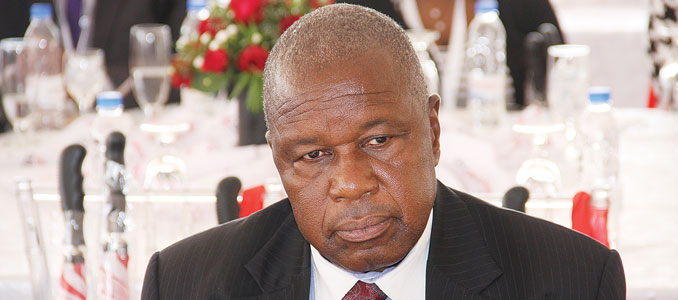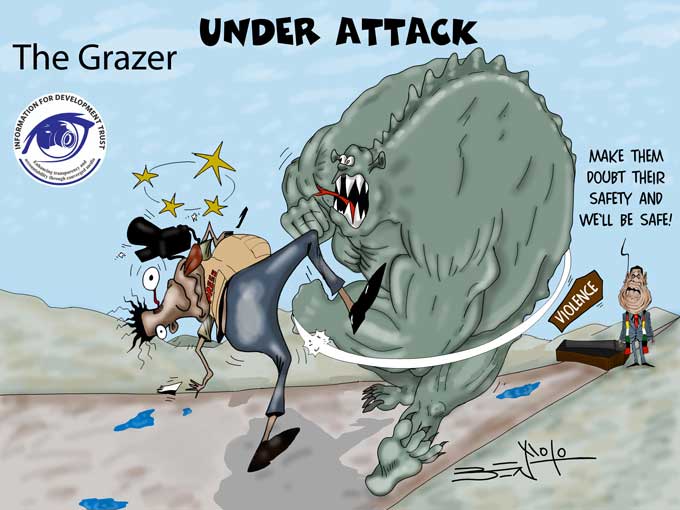
By Obey Manayiti and Sophie Cullis
Small-scale and artisanal gold mining is increasingly becoming a vital source of revenue for both the government and families in Zimbabwe.
With high unemployment, many people are turning to artisanal mining for survival.
In its plan to grow the economy through mining, the government of Zimbabwe is expecting gold to contribute an annual income of $4 billion in its 2023 economic vision.
This is a huge target considering that so far, gold has been bringing in an average of $1 billion annually.
In 2019, small-scale miners contributed almost half of the total gold output.
However, gold production from small scale and artisanal miners could be significantly higher than what it is at the present moment because most of it is traded on the parallel market.
As the government is pressing for a higher gold delivery from both large-scale and small-scale gold mining, concern has also been raised on how much effort it is channeling to protect the environment from harmful and unsustainable mining operations.
- Chamisa under fire over US$120K donation
- Mavhunga puts DeMbare into Chibuku quarterfinals
- Pension funds bet on Cabora Bassa oilfields
- Councils defy govt fire tender directive
Keep Reading
Before any mining operations commence, the law requires mining companies to draw up an Environmental Impact Assessment (EIA) plan, a technical and scientific study, by which a road map is set-out in order to minimize environmental damage during their operations.
EIAs also require plans by which mining companies demonstrate how they will rehabilitate the environment after mining has ceased.
Environmental protection is key to the livelihoods and health of both present and future generations.
Therefore, present generations must utilise the environment in a cautious manner, bearing in mind that those future generations to come will still be dependent on the same environment, more or less, in a similar way to today.
It is a sacred resource and a precious heritage that must not be tinkered with.
In short, the present generation owes it to the future.
Most artisanal mining happens haphazardly, with no regard whatsoever to the environmental impact.
They do not carry out EIAs and they often leave the land from where they will be mining unrehabilitated.
Some have mined along water bodies where they divert and pollute rivers.
Artisanal miners also use harmful chemicals such as mercury to purify their gold, a process that is toxic to the environment.
Protecting the environment is everyone’s responsibility.
Where people do not necessarily see the benefit of conserving the environment, the government must enforce and make sure that natural resources management do not lead to deeper and long lasting, and even permanent, problems.
This can be achieved through educational and awareness programmes.
The government and other stakeholders, including advocates of artisanal mining, must devise ways by which they can effectively communicate the dangers of being reckless with the environment.
For this to be effective, the messaging must be clear, easy to understand and actionable.
To reclaim the land, the government can lead a process of reforestation in abandoned mining areas where some pits are often left unrehabilitated.
To encourage participation and ensure that this is long term, there must be incentives associated to this.
Sometimes going with the soft approach may help draw people to cooperate and make them see the sense of the overall objective.
On the legal side, the government must strengthen the Environmental Management Agency (EMA) so that it authoritatively clamps down on environmental offenders.
Although this might be a challenge for the EMA, considering how highly politicised the artisanal mining environment in Zimbabwe is and how some Zanu PF officials conflate their authority with that of government agencies, the EMA should develop ways to send a message to all those who might disregard their guidelines.
In short, the EMA must ensure that its penalties far outweigh the benefits of non-compliance to its regulations relating to the environment.
Well-established mining companies have a large role to play too and government must give a leeway for this to be realized in a similar way that out-growers and small-scale farmers can form partnerships with big farmers around their communities.
They will benefit from the expertise of an established large scale miner who will also inculcate the best and sustainable practices.
“This creates a win-win situation” as Chairman and Mineral Economist at Institute of Mining Research in Zimbabwe Lyman Mlambo stated, adding that such an arrangement is already happening at the Freda Rebecca Mine.
Firstly, this partnership will be positive in the sense that the artisanal mining activities will be monitored by large-scale miners who will make sure that negative environmental impacts are minimized.
Large-scale miners do not necessarily want to be associated with environmental degradation; they have a reputation to protect.
Some are listed on the stock exchange and they have mining interests elsewhere therefore, they will try to promote sustainable mining.
Secondly, with the unintended consequences of the Indigenisation Act, ownership of particular mining concessions has been contested.
This has led to invasions and loss of business on the part of the established mining companies.
Some have given up, leading to abandoned mines. This formalized partnership will hopefully resolve this problem.
Thirdly, it becomes easy for environmental monitors such as the EMA to carry on their duties.
Enforcement and monitoring on the environmental best practices will be coming from different angles.
Through this arrangement, artisanal miners can stop unsustainable mining practices and turn to the modern technology used by larger-scale mining operations, thereby reducing the environmental damage that would otherwise have been caused without such technology.
This also means that artisanal miners may have to end the use of harmful chemicals such as cyanide, a move which will also benefit the communities reliant on the same water sources that are polluted by these chemicals.
The pollution often derives from the use of these unsustainable means to mine and purify gold.
Fourthly, this can potentially resolve the question of black markets. As noted above, Zimbabwe is losing a large amount of its revenue from gold leaks and when a partnership is formed, the gold will have to be sold through formal markets for accounting purposes of the large-scale miners.
The government will get its fair share too.
The question of natural resources management has no easy answer. However, there are certain practices worth pursuing and other that must be dropped.
The main purpose of mineral extraction is to get value that will keep workers and communities happy, and have the mining companies and the government smiling all the way to the bank.
- Obey Manayiti and Sophie Cullis are both graduate students at Columbia University in New York, USA.










